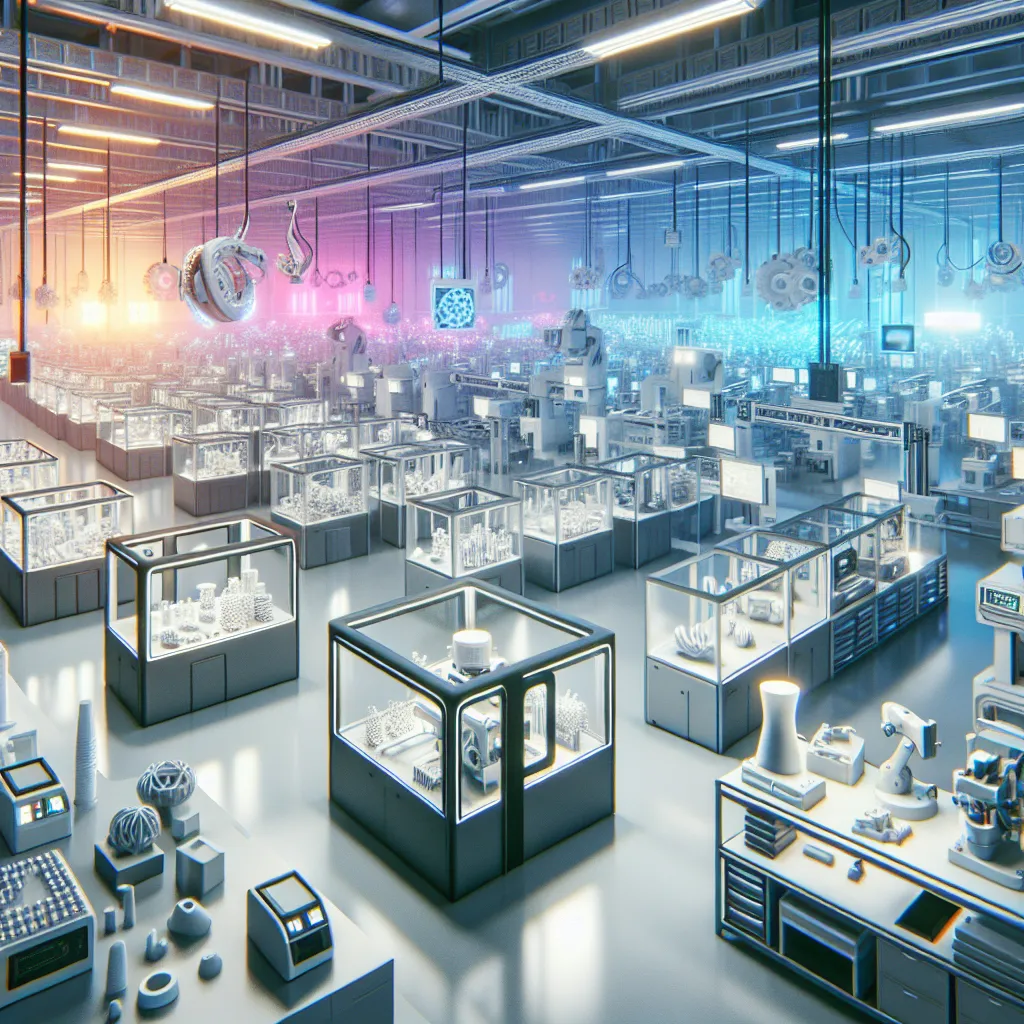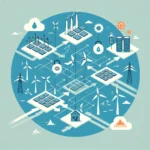As an experienced IELTS instructor, I’m excited to share with you a comprehensive IELTS Reading practice test focused on the fascinating topic of “How 3D Printing is Transforming Manufacturing.” This test will not only help you improve your reading skills but also provide valuable insights into this cutting-edge technology that’s reshaping industries worldwide.
 3D Printing in Manufacturing
3D Printing in Manufacturing
Introduction to the Test
This IELTS Reading practice test consists of three passages of increasing difficulty, mirroring the structure of the actual IELTS exam. Each passage is followed by a variety of question types designed to assess your comprehension and analytical skills. Let’s dive into the world of 3D printing and its revolutionary impact on manufacturing!
Passage 1 (Easy Text)
The Basics of 3D Printing in Manufacturing
3D printing, also known as additive manufacturing, is a process that creates three-dimensional objects by layering materials based on digital models. This technology has been around since the 1980s but has gained significant traction in recent years due to advancements in materials, software, and hardware.
In traditional manufacturing, products are typically made through subtractive processes, where material is removed from a larger block to create the desired shape. In contrast, 3D printing builds objects from the ground up, layer by layer. This approach offers several advantages, including reduced waste, the ability to create complex geometries, and increased customization options.
The impact of 3D printing on manufacturing has been profound. Industries ranging from aerospace to healthcare have embraced this technology to produce parts, prototypes, and even finished products. One of the most significant benefits is the ability to rapidly prototype designs, allowing companies to test and refine products much faster than traditional methods.
Moreover, 3D printing has enabled the concept of distributed manufacturing, where products can be produced closer to the point of use, reducing transportation costs and lead times. This shift has the potential to revolutionize supply chains and make manufacturing more responsive to local needs.
As the technology continues to evolve, we are seeing an expansion in the types of materials that can be used in 3D printing. From plastics and metals to ceramics and even food-grade materials, the possibilities are constantly growing. This versatility is opening up new applications and markets for 3D-printed products.
Questions 1-5
Do the following statements agree with the information given in the passage? Write
TRUE if the statement agrees with the information
FALSE if the statement contradicts the information
NOT GIVEN if there is no information on this
- 3D printing is a new technology that was invented in the last decade.
- Traditional manufacturing typically uses subtractive processes.
- 3D printing allows for the creation of more complex shapes than traditional manufacturing methods.
- The aerospace industry has been slow to adopt 3D printing technology.
- 3D printing can only use plastic materials.
Questions 6-10
Complete the sentences below. Choose NO MORE THAN TWO WORDS from the passage for each answer.
- 3D printing is also referred to as ___ manufacturing.
- The ability to quickly create and test product designs is known as ___ prototyping.
- 3D printing enables ___ manufacturing, which can reduce transportation costs.
- The expansion of materials used in 3D printing is creating new ___ for printed products.
- 3D printing builds objects by adding material ___ by layer.
Passage 2 (Medium Text)
The Transformative Impact of 3D Printing on Manufacturing Processes
The integration of 3D printing into manufacturing processes has ushered in a new era of production capabilities, challenging traditional paradigms and offering unprecedented flexibility. This technology, which seemed like science fiction mere decades ago, is now a cornerstone of innovation across various industries.
One of the most significant impacts of 3D printing on manufacturing is the democratization of production. Small businesses and individual entrepreneurs now have access to manufacturing capabilities that were once the exclusive domain of large corporations. This shift has led to a surge in customization and personalization options for consumers, as small-batch production becomes economically viable.
The aerospace industry, in particular, has been quick to leverage the advantages of 3D printing. Lightweight components with complex geometries, which would be impossible or prohibitively expensive to produce using traditional methods, can now be manufactured with relative ease. This has resulted in significant weight reductions in aircraft, leading to improved fuel efficiency and performance.
In the automotive sector, 3D printing is revolutionizing both prototype development and production of end-use parts. Major manufacturers are exploring ways to incorporate 3D-printed components into vehicles, potentially leading to more efficient and customizable cars. The technology also enables the production of spare parts on demand, which could dramatically reduce inventory costs and improve vehicle longevity.
The medical field has seen perhaps the most profound impact from 3D printing. Custom prosthetics, dental implants, and even human tissue scaffolds are now being produced using this technology. The ability to create patient-specific medical devices and implants is improving treatment outcomes and quality of life for many individuals.
However, the adoption of 3D printing in manufacturing is not without challenges. Quality control and consistency in large-scale production remain areas of concern. Additionally, the need for specialized skills and knowledge to operate advanced 3D printing systems has created a demand for new types of training and education in the workforce.
Despite these challenges, the trajectory of 3D printing in manufacturing is clear. As the technology continues to mature, we can expect to see even greater integration into production processes across all industries. The future of manufacturing is likely to be a hybrid model, combining the strengths of traditional methods with the flexibility and innovation offered by 3D printing.
Questions 11-14
Choose the correct letter, A, B, C, or D.
-
According to the passage, 3D printing has:
A) Replaced traditional manufacturing methods entirely
B) Made manufacturing accessible to smaller businesses
C) Reduced the need for customization in products
D) Increased the cost of production for all industries -
In the aerospace industry, 3D printing has primarily been used to:
A) Increase the weight of aircraft components
B) Produce fuel for aircraft
C) Create complex, lightweight parts
D) Replace all traditional manufacturing processes -
The automotive industry is using 3D printing for:
A) Fuel production
B) Vehicle assembly lines
C) Prototype development and end-use parts
D) Marketing materials -
The medical field has benefited from 3D printing through:
A) The production of generic medications
B) The creation of customized medical devices
C) The replacement of all surgical procedures
D) The elimination of the need for prosthetics
Questions 15-19
Complete the summary below. Choose NO MORE THAN TWO WORDS from the passage for each answer.
3D printing has transformed manufacturing by enabling the (15) of production, allowing small businesses to compete with larger corporations. This technology has led to increased options for (16) and personalization in consumer products. In the aerospace industry, 3D printing facilitates the creation of (17) with complex geometries, improving fuel efficiency. The automotive sector uses 3D printing for prototype development and production of (18) , while also exploring on-demand production of spare parts. Despite its advantages, 3D printing faces challenges in (19) ___ and consistency for large-scale manufacturing.
Question 20
Choose the correct letter, A, B, C, or D.
- The passage suggests that the future of manufacturing will likely:
A) Completely abandon traditional manufacturing methods
B) Rely solely on 3D printing for all production needs
C) Combine traditional methods with 3D printing technologies
D) Revert back to pre-3D printing manufacturing techniques
Passage 3 (Hard Text)
The Socioeconomic Implications of 3D Printing in Manufacturing
The proliferation of 3D printing technology in manufacturing is not merely a technological shift; it represents a fundamental restructuring of production paradigms with far-reaching socioeconomic implications. This disruptive innovation is poised to redefine the landscape of global manufacturing, potentially altering established economic models and labor markets.
One of the most profound impacts of 3D printing lies in its potential to decentralize manufacturing. The traditional model of centralized mass production, which has been the cornerstone of industrial economies since the advent of the assembly line, is being challenged by the possibility of distributed, localized production. This shift could lead to a significant reorganization of global supply chains, potentially reducing the economic advantages of manufacturing hubs in developing countries and bringing production closer to the point of consumption in developed nations.
The implications for international trade are substantial. As 3D printing technology matures, we may witness a reduction in the global shipment of finished goods, replaced by the transmission of digital files for local production. This could lead to a decrease in traditional shipping and logistics operations, while simultaneously creating new opportunities in digital file security, authenticity verification, and intellectual property protection.
From a labor perspective, the integration of 3D printing into manufacturing processes is likely to result in a significant skills shift in the workforce. While some traditional manufacturing jobs may become obsolete, new roles will emerge in areas such as 3D printer operation, CAD design, and materials science. This transition underscores the need for educational systems and workforce development programs to adapt rapidly to equip workers with the skills required in this evolving landscape.
The democratization of manufacturing capabilities through 3D printing also has the potential to foster a new wave of entrepreneurship and innovation. Lowered barriers to entry in product development and production could lead to an explosion of small-scale manufacturers and startups, challenging established market players and potentially accelerating the pace of innovation across industries.
However, this democratization also raises concerns about quality control and regulatory oversight. As manufacturing capabilities become more widely distributed, ensuring consistent product quality and safety standards becomes more challenging. Regulatory bodies will need to develop new frameworks to address the unique challenges posed by decentralized production, particularly in sensitive industries such as healthcare and aerospace.
The environmental implications of widespread 3D printing adoption are complex and multifaceted. On one hand, localized production could reduce the carbon footprint associated with global shipping. Additionally, the additive nature of 3D printing can result in less material waste compared to subtractive manufacturing methods. Conversely, the energy intensity of 3D printing processes and the use of certain materials raise concerns about the technology’s overall environmental impact, necessitating further research and development in sustainable 3D printing practices.
As 3D printing continues to evolve, its impact on intellectual property rights will likely become a contentious issue. The ease of replicating physical objects from digital files poses challenges to traditional patent and copyright systems, potentially necessitating new legal frameworks to protect innovation while fostering an open ecosystem for creativity and technological advancement.
In conclusion, while 3D printing offers immense potential to revolutionize manufacturing, its widespread adoption will require careful navigation of complex socioeconomic challenges. The technology’s transformative power extends far beyond the factory floor, promising to reshape global economic structures, labor markets, and regulatory landscapes. As we stand on the cusp of this new manufacturing paradigm, it is imperative that policymakers, industry leaders, and educators collaborate to harness the benefits of 3D printing while mitigating its potential drawbacks, ensuring a transition that is both economically viable and socially responsible.
Questions 21-26
Complete the sentences below. Choose NO MORE THAN TWO WORDS from the passage for each answer.
- The shift towards localized production through 3D printing could lead to a reorganization of global ___.
- As 3D printing technology advances, there may be a decrease in the global shipment of ___.
- The integration of 3D printing in manufacturing will likely result in a significant ___ in the workforce.
- The democratization of manufacturing through 3D printing could lead to an explosion of ___ challenging established market players.
- Ensuring consistent product quality and safety standards becomes more challenging as manufacturing capabilities become more ___.
- The ease of replicating physical objects from digital files poses challenges to traditional ___ systems.
Questions 27-30
Do the following statements agree with the claims of the writer in the passage? Write
YES if the statement agrees with the claims of the writer
NO if the statement contradicts the claims of the writer
NOT GIVEN if it is impossible to say what the writer thinks about this
- 3D printing will completely replace traditional manufacturing methods in all industries.
- The adoption of 3D printing in manufacturing will create new opportunities in digital file security and authenticity verification.
- The environmental impact of 3D printing is unequivocally positive compared to traditional manufacturing methods.
- Policymakers, industry leaders, and educators need to work together to address the challenges posed by the widespread adoption of 3D printing.
Questions 31-35
Choose the correct letter, A, B, C, or D.
-
According to the passage, the decentralization of manufacturing through 3D printing could:
A) Strengthen the economic advantages of manufacturing hubs in developing countries
B) Increase the global shipment of finished goods
C) Reduce the economic benefits of manufacturing in developing countries
D) Have no impact on global supply chains -
The passage suggests that the integration of 3D printing in manufacturing will:
A) Eliminate all traditional manufacturing jobs
B) Create new roles in areas such as 3D printer operation and CAD design
C) Decrease the need for skilled workers in the manufacturing sector
D) Have no effect on workforce skills requirements -
The author’s stance on the environmental implications of 3D printing is:
A) Entirely positive
B) Entirely negative
C) Neutral
D) Complex and multifaceted -
The passage indicates that the impact of 3D printing on intellectual property rights will:
A) Strengthen existing patent and copyright systems
B) Have no effect on current legal frameworks
C) Likely become a contentious issue requiring new legal approaches
D) Only affect the manufacturing sector -
The overall tone of the passage regarding the future of 3D printing in manufacturing is:
A) Overly optimistic
B) Deeply pessimistic
C) Cautiously optimistic with awareness of challenges
D) Indifferent
Answer Key
Passage 1
- FALSE
- TRUE
- TRUE
- NOT GIVEN
- FALSE
- additive
- rapid
- distributed
- applications
- layer
Passage 2
- B
- C
- C
- B
- democratization
- customization
- components
- end-use parts
- quality control
- C
Passage 3
- supply chains
- finished goods
- skills shift
- small-scale manufacturers
- widely distributed
- patent and copyright
- NO
- YES
- NO
- YES
- C
- B
- D
- C
- C
This IELTS Reading practice test has provided you with a comprehensive exploration of how 3D printing is transforming manufacturing. By engaging with these passages and questions, you’ve not only enhanced your reading skills but also gained valuable insights into this revolutionary technology.
Remember, success in the IELTS Reading section comes with practice and familiarity with various question types. Keep honing your skills, and don’t hesitate to explore more resources on our website, such as how robotics is reshaping manufacturing or the future of 3D printing in manufacturing.
As you continue your IELTS preparation, consider how technologies like 3D printing might impact other areas, such as waste reduction in manufacturing or revolutionizing the healthcare industry. Broadening your knowledge on these topics will not only improve your reading skills but also prepare you for potential writing or speaking tasks related to technological advancements.
Keep practicing, stay curious, and remember that every reading passage is an opportunity to learn something new while improving your English language skills. Good luck with your IELTS preparation!


